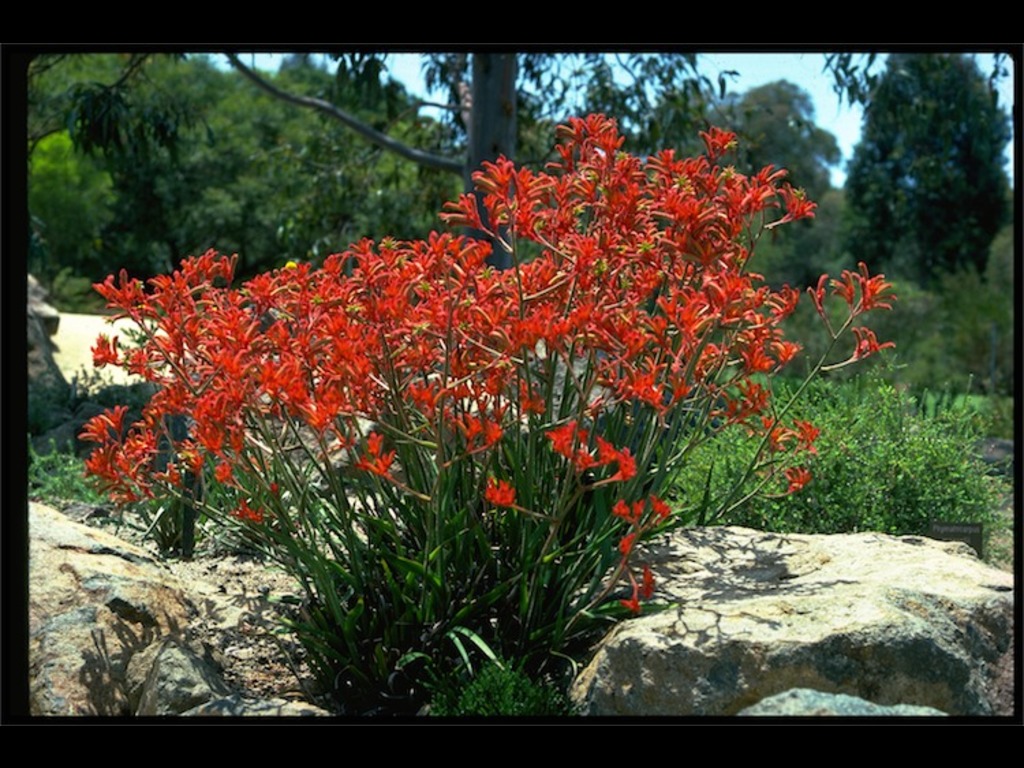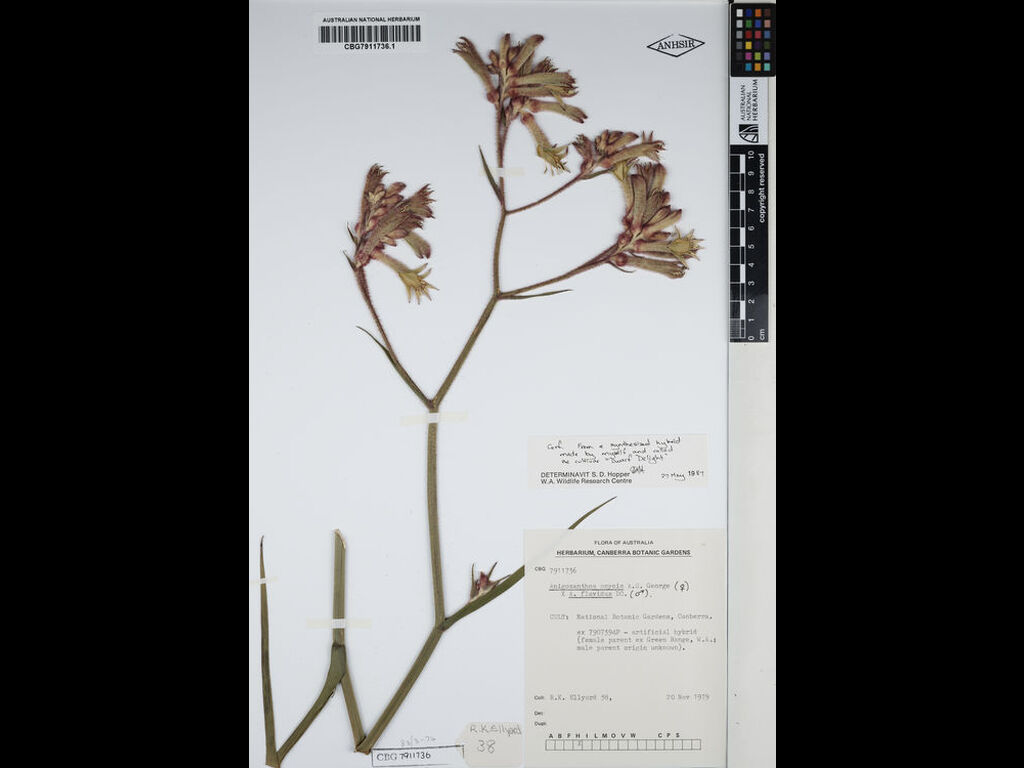Anigozanthos 'Dwarf Delight'
- File Number
- 253
- ACRA Field Book Number
- -
- Registration Date
- 17/11/1982
- Application Received
- 20/02/1980
- Family
- Haemodoraceae
- Cultivar Name
- Anigozanthos 'Dwarf Delight'
- Origin
- Anigozanthos 'Dwarf Delight' is the result of a manipulated cross between Anigozanthos onycis female with A. flavidus male. The cross was performed by Dr S D Hopper of Western Australia. Cultivar first received by the Authority 20 February 1980. The applicant is Dr S D Hopper, WA Wildlife Research Centre, PO Box 51, Wanneroo, WA 6065.
- Characteristics
- This cultivar is a compact plant with much branched flower stems to .8m tall. The flowering stems are covered with plumose hairs. These hairs are sparsely scattered at the base of the stem and around the leaf-like bracts on the stem. The hairs are reddish in colour. The perianth segments of the flower are green-yellow but appear apricot when seen through the reddish hairs. These two colours contrast well. The leaves are up to 25cm long by 1cm wide. Diagnosis: Anigozanthos 'Dwarf delight', which grows to 0.8m tall, is midway in height between the ca. 0.3m of A. onycis and ca. 2m of A. flavidus. The flowering stems of the cultivar are sparsely covered with plumose hairs for much of their length, becoming dense towards the individual flowers. The flowering stems of the cultivar are sparsely covered with plumose hairs for much of their length, becoming dense towards the individual flowers. A. onycis, is covered in dense, plumose hairs for the full length of the flower spike while A. flavidus has them only on the perianth segments of the flower and for a short distance below on the stem. The majority of the stem in this species is glabrous. The leaf-like bracts on the stem are the size of A. onycis. The flowers are intermediate in size between those of the two parents.
- Cultivation
- This cultivar is very free flowering, and can be readily reproduced using tissue culture or more slowly using traditional methods of division. It also shows excellent qualities for use as a cut fresh flower, having good colour and stem length and very narrow stems, which reduces freight cost. It has the longevity of A. flavidus, with some plants of this cross being known in cultivation for up to 8 years (as at October 1981). Anigozanthos 'Dwarf Delight' is frost hardy.
- Publication
- Payne, W.H. (1984), Garden Cultivars of Australian Plants. Australian Plants 12(99): 322-323 with reference to Australian Plants, Hybridizing Anigozanthos, Vol. 10 p. 211-217 and Australian Journal of Botany No. 28 p.659-680.
- Colour Coding
- RHS Colour Chart 1966.plumose hairs: red group 45A.perianth tube (mature flowers):yellow green 145B.perianth tube (buds): near yellow green 144C.filaments: yellow green 144C.anthers: yellow 13B.
- Propagation
- Division or tissue culture
- Applicant Name
- S D Hopper
- Uses
- As part of a mass planting or mixed in a shrubbery, or as a spectacular feature plant. Attracts nectar feeding birds.
- Availability
- Unknown
- ANBG Accession Numbers
- ACC253; CBG7907394.
- NSL ID
- -

